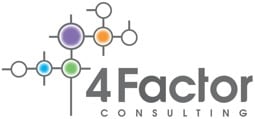This is the fourth article in my series regarding SmartGrid and we are finally beginning to get near to direct consumer contact. All of this discussion has potentially significant impacts on electricity consumers, but are parts of the grid that are “behind the green curtain” to most consumers. Distribution is differentiated from transmission in that we are dealing with the local switchyards that step the power down from the high voltage lines and putting power out in almost spider web fashion to individual neighborhoods, businesses, and homes.
to most consumers. Distribution is differentiated from transmission in that we are dealing with the local switchyards that step the power down from the high voltage lines and putting power out in almost spider web fashion to individual neighborhoods, businesses, and homes.
So what are the issues and SmartGrid implications at distribution?
Distribution switchyards are plagued by some of the same issues as large transmission switchyards and would benefit from some of the same detection and automation systems. Having already discussed that in my blog about transmission, I won’t repeat it here.
One of the key functions of the distribution system is to maintain quality control of the electricity as it is delivered to the home. Electricity is somewhat intangible so understanding the quality issue is important here. Appliances in the US rely on certain consistent features of the electricity coming out of the standard 3 prong plug. This electricity should be at 120V, alternating current at 60 Hz, and adequate amperage to drive all of the appliances in the house.
In order to successfully perform this function, the systems have assumed that electricity flows only one direction, from the distribution centers outward toward the final user. Some small amount of distributed power is allowed. For example, a large industrial center might place a small gas turbine or a solar array on the roof tops to provide additional power to that facility.
The local utility might agree to allow the utility to push excess power from such systems back to the grid for some financial considerations. In general, these are reasonably large facilities with potential power output large enough to provide good cost benefit considerations for the transmission lines to be installed to such an installation.
However, most residential and small commercial users that have installed solar arrays, wind mills, or other residential sized power generating equipment have found that while they are free to use the power generated within their own facility, but cannot tie these units into the grid to provide power back to the system. This seriously limits the value of such systems and extends the time required to recoup the investment.
Because the current systems assumes a one way flow of electricity from the distribution systems to the final user, there are systems that trip open to protect the circuitry from electricity that is flowing “the wrong way”. These systems will have to be revised to be more sophisticated in the sensing of electrical flow to identify “good” electricity from that that is out of phase, or at unacceptable voltages or amperages for the system to accept. One concept that is currently being investigated is a “microgrid” structure where power being generated and consumed in one local area is managed somewhat autonomously from the larger grid. An intelligent gatekeeper manages the flow of electricity into and out of this microgrid from the larger grid.
Currently, the market demand for such systems that allow residential and other small volume consumers to become producers of electricity on a small and sporadic basis has been very limited. The costs to upgrade the distribution centers and the connections to the end-user to allow such endeavors to succeed are relatively high and offer minimal payback to the utility as the amount of electricity received for potential resale is minimal and unreliable as the consumer reasonably wants to service their own need first and only provide power to the larger grid when they have an excess of power to generate. In addition, very few end consumers are interested in or even willing to have such power generating devices at their homes. By some estimates, 90% of residential consumers are indifferent to electricity costs and demands today. Leaving only 10% of interested consumers, of which only a small fraction can afford the front end costs or live in a home where they have the ability to consider such an installation.
While creating such sophisticated infrastructure makes sense when whole subdivisions are being built in areas of high growth, the cost of retrofitting existing systems is not a good use of limited resources. Other, higher payback issues in transmission, storage, and generation should have more attention, time and effort spent on them before significant efforts to upgrade this portion of the grid should be considered.
Next: SmartGrid and the consumer

